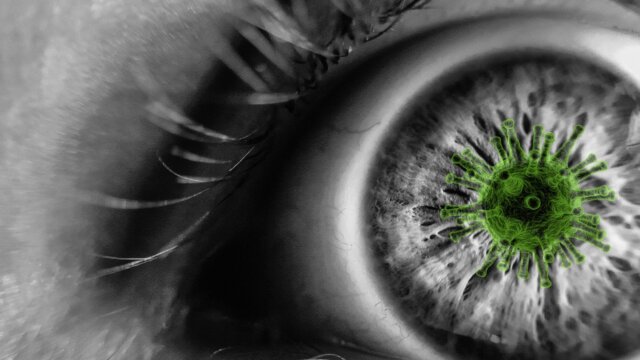FTC disclaimer: This post may contains affiliate links and we will be compensated if you click on a link and make a purchase.
Asthma is a common condition that affects millions of people around the world. While the causes of asthma are still not fully understood, certain triggers can bring on an asthma attack.
Common Asthma triggers include dust, pollen, smoke, pets, and exercise.
This article will explore these triggers in more detail and explain what you can do to avoid them.
What triggers Asthma?
It can be difficult to identify exactly what triggers your asthma. Sometimes the link is obvious — for example when your symptoms start within minutes of coming into contact with a cat or dog.
But some people can have a delayed reaction to an asthma trigger, so some extra detective work may be needed.
A diary card to record your peak-flow readings and/or asthma symptoms will help you identify your asthma triggers. Note when your symptoms are worse and anything you might have come into contact with.
Avoiding the triggers
Once you have identified the things that bring on your asthma symptoms, you can take steps to avoid them. This can sometimes be tricky.
There will likely be many different things that trigger your asthma, so you probably won’t be able to avoid them all.
Most Common Asthma Triggers
To get you started, here are the most common triggers and what you can do to avoid them.
Colds and viral infections
These are very common triggers of asthma attacks. They are also almost impossible to avoid. Using your inhaler regularly will reduce the risk of an asthma attack from colds or infections.
A healthy diet with lots of fresh fruit and vegetables containing vitamin C will also help fight viruses. GPs recommend flu injections for those with severe asthma and people over 60.
House dust mites

These tiny insects (about 0.3-mm long) are transparent, so you can only see them with a microscope.
They live in the dust that builds up around the house, so you can find them in carpets, bedding, beds, soft furnishings, and soft toys.
Studies have shown that up to 85 percent of people with allergic asthma are sensitive to house dust mites or, more specifically, their droppings.
Although you will not be able to remove all house dust mites from your home, there are many measures you can take to limit the effects of their droppings.
Steps needed to remove house dust mites
Take the easier and inexpensive steps to see if they improve your asthma. It is no use spending a lot of time, money, and effort on dust control if you are not allergic to it.
Use barrier covers for your mattress, duvet, and pillow, and wipe them with a damp cloth once a week. Make sure all the beds in the room are covered.
Covers that completely enclose the mattress are better than ones only covering the top. Barrier covers need not be expensive, so shop for ones that suit your budget.
Hot wash (at 60o C) sheets, duvet covers, and pillowcases once a week. Keep soft toys to a minimum.
Either hot wash them every one to two weeks or put soft toys in the freezer bag for six hours. This kills the mites.
Vacuum all carpeted areas frequently. Use a vacuum cleaner with good suction and a filtered exhaust that doesn’t scatter dust. Damp-dust all surfaces daily or use an attachment on your vacuum cleaner.
Use cotton or synthetic blankets instead of wool. They are easier to wash and are less likely to carry allergens.
Although some people are allergic to feathers, there is no conclusive evidence to show that synthetic, so-called hypoallergenic pillows are any better.
Whichever pillows you choose, use a barrier cover and wipe them with a damp cloth once a week.
If these steps seem to work, you might also like to:
Choose a short-pile synthetic carpet. It may be better than a pure wool carpet, but no conclusive proof exists.
Replace carpets with lino, tiled, or wood flooring. Plain, wooden bed frames are preferable to upholstered beds or headboards, which tend to collect dust.
Wash curtains every two to three months. Vertical blinds are often a better choice, but keep them free from dust.
House dust mites love warm and humid environments, so you can reduce humidity levels in your home by keeping rooms well aired, using an extractor fan, and/or opening windows during and after cooking when you are washing or using the bathroom.
Keeping the kitchen and bathroom doors closed to prevent damp spreading to other parts of the house also helps remove dampness and mold quickly; avoid condensation by keeping the house well aired.
Cigarette smoke

Smoking is dangerous for everyone, particularly for people with asthma. Inhaling cigarette smoke can irritate the lungs and bring on asthma symptoms.
If you have asthma and smoke, you increase your asthma attack risk and may permanently damage your airways.
Passive smoking is particularly harmful to young children. If you are planning a baby, neither parent must smoke.
Studies have shown that children of mothers who smoke are more likely to develop asthma.
Other evidence suggests that if a parent of an asthmatic child stops smoking, it can decrease the severity of the child’s condition.
Inhaling other people’s smoke is also hazardous for people with asthma.
Pets
Unfortunately, animals are a common trigger of asthma symptoms. The allergens are found in the pets’ saliva and very small skin flakes (pet dander), fur, and urine.
Studies have shown that using a vacuum cleaner with a filter can reduce levels of cat allergens in the air. However, these levels can increase by more than three times immediately after vacuuming.
If cats trigger your asthma, it might be a good idea to persuade someone else to do the vacuuming and stay out of the room until the allergens have settled.
Exercise
Some people find that exercise triggers asthma symptoms.
A study by the Norwegian Institute of Public Health in Oslo suggests that baby swimming and infant respiratory health may be linked.
The prevalence of recurrent respiratory tract infections was higher (12.3 percent) among children who took part in baby swimming than among those who did not (7.5 percent)—but perhaps more significantly, they were also the ones whose parents had a history of asthma, hayfever or eczema.
The main trigger for EIA appears to be cold, dry air. With aerobic exercise, there is suddenly a large increase in the air volume that the body must moisten and warm.
Chlorine
Belgian research scientists have suggested that nitrogen trichloride, a powerful irritant and a byproduct of the chlorine used to disinfect swimming pools, could be linked to a growing incidence of childhood asthma.
The researchers measured levels of lung-specific proteins in the blood of primary school children who had swum regularly at indoor pools since their early childhood and found a consistent and significant association between regular attendance at indoor swimming pools with lung-specific proteins (markers of lung permeability and epithelial damage).
The study calls for more epidemiological studies to be carried out “to verify if the increasing chlorinated pool attendance, especially by young children, could not be an important westernization-associated factor in the rising incidence of childhood asthma and allergic diseases in industrialized countries” and suggests whether it wouldn’t be better if we used non-chlorine-based disinfectants instead.
Pollen

Many different types of pollen grains (from grasses, trees, and plants) can trigger asthma symptoms in some people. Grass pollen is most likely to be a problem.
If grass pollen triggers your asthma, review your treatment with your doctor or practice nurse before the hayfever season begins.
On hot, dry days, avoid spending too much time outdoors. Avoid long grass, keep car windows closed, and look for pollen forecasts on TV, in newspapers, or on the Internet.
Poor air quality
Unfortunately, the air we breathe contains many things that can worsen asthma symptoms.
Air pollutants like cigarette smoke and car exhaust fumes release gases and particles into the atmosphere, irritating your airways.
Ground-level ozone can be a problem for some people. Levels are likely to be higher on hot summer days. If you think this might trigger you, avoid exercising outdoors, especially in the afternoon.
Weather
Sudden changes in temperature, cold air, windy days, and poor air quality on dry days can all affect your asthma.
Take your usual inhaler dose before going out on cold, dry days. Wear a scarf over your face if it’s cold and windy. It will help warm up the air before you breathe it in.
Try to avoid going out in the middle of the day on hot, smoggy days. Thunderstorms can also release large quantities of pollen into the air and trigger asthma attacks.
Mold
Molds release tiny seeds called spores into the air. If you breathe these spores in, they can trigger asthma symptoms.
Mold spores are found in any damp place—from piles of autumn leaves and woody areas to bathrooms, kitchens, and even piles of damp clothes.
Perfume
Perfumes are major asthma triggers. Watch out for hidden or unusual sources like furniture wax, plastic bin bags, inks, hair gel/spray, women’s magazines, and kitty litter.
Food
Most people with asthma don’t have to follow a special diet, but certain foods can sometimes worsen symptoms.
Dairy products (including cow’s milk), eggs, shellfish, fish, yeast products, and nuts are some offenders. Some people can have a severe or anaphylactic reaction to these foods.
Everyday medicines
Some medications can lead to asthma attacks. This occurs most often with medicines containing aspirin, non-steroidal anti-inflammatory tablets (NSAIDs, such as Nurofen), and beta-blockers used for heart disease.
UK researchers at the Queen Elizabeth Hospital in Birmingham have recently suggested that taking large amounts of paracetamol regularly may deplete stores of glutathione, one of the major antioxidants present in the lung.
Vaccination
Another probable asthma trigger is vaccination. During a study of long-term breastfeeding, Dr. Michel Odent and his London-based Primal Health Research Centre discovered, in a surprise finding, that children immunized against whooping cough were six times more likely to have asthma than those who hadn’t been given the jab.
Emotion
Besides iatrogenic causes, some evidence is that emotional triggers play a role in asthma, particularly large airway obstruction.
Perhaps the most telling evidence of the emotional cause of asthma is the number of trials that show that both treated and control groups get better, suggesting that mind-body treatments may be among the most effective.
Asthma and pregnancy
Generally speaking, a third of women with asthma report that their symptoms get worse during pregnancy, while a third say it stays the same, and a third say it improves.
One good news is that asthma is least likely to cause a problem in the last few weeks of pregnancy, and very few mothers have symptoms during labor.
Feeling breathless as pregnancy proceeds is often a common experience, even for women who don’t have asthma.
Increasing weight, a growing baby in the abdomen prevents the lungs from expanding properly, a substantial increase in blood volume, and a tendency to anemia can all contribute to this.
Once you have ensured you are getting the best control for your asthma during pregnancy, what steps can you take to help ensure a healthy start for your baby?
We know that asthma — like the related conditions of eczema and hay fever—is a condition that runs in the family.
You can take steps to reduce the chances of your baby developing asthma.
Babies born to parents with allergic tendencies are at a higher risk of developing allergies if they are exposed to allergens in the first three to six months of their lives.
This is one of the reasons why the Department of Health recommends that you do not give your baby foods containing eggs, nuts, cow’s milk, or wheat during the first six months.
And once your baby is born, you should try to breastfeed because vital nutrients are contained in breast milk, which helps to build up your child’s immune system from a very early age.
Conclusion
There are many triggers for asthma that can set off an attack. By understanding these triggers, you can be better prepared to manage your asthma and avoid attacks.
If you have asthma, work with your doctor to create an asthma action plan that outlines what you should do if you have an attack.








